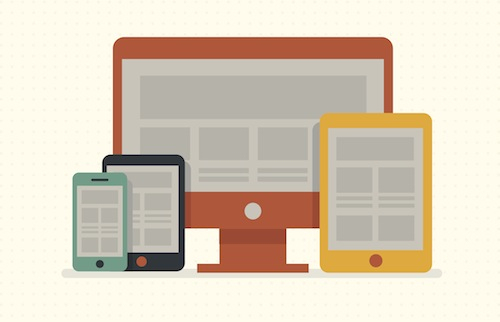With the economy sinking all over the place, it’s just as challenging for designers to stay afloat as it is for most other professionals. Designers, however, have even more to worry about today than most others because the design environment changes proportionate to web technologies, which really has a rapid rate of change. On top of that, there’s a force wall of competition that threatens every designer off the hinges.So, what do designers have to protect themselves from? What are the possible ways designers and developers can thwart their own progress? Here are some of those challenges that designers have to face from 2013 onwards:
Challenge # 1: Can’t play it safe any more
When the Internet was a baby and when it was just beginning to reach out to the masses, web technology was basic. A few pages of basic HTML and we had websites showing up all over the world. Gradually, that changed. Web technologies evolved quickly and there are a bunch of technologies to power any given website. Simplicity remained as the trump card from the very start of the Internet to the present day (and we suspect that simplicity will remain as the crux forever). To power the simplicity of a modern-day website, there’s a lot happening under the hood.
For a designer or developer to achieve that kind of simplicity while retaining the design, utility, and practical use of the site, it’s not easy – at least not as easy as it used to be.
Back then, there was just HTML. Today, there’s HTML, HTML5, CSS3, JavaScripts, jQuery (including Mobile jQuery), .Net, Ajax, ASP, Java, PHP, MySQL, Ruby on Rails, Python, CMSs, Magento, and much more.
One language, a few clients, one job, and rudimentary development or designing knowledge is a thing of the past. Designers would have to give it everything they’ve got just to keep up.
Challenge # 2: Accessibility
Earlier, the only place a website had to show up at was the desktop PC. When laptops emerged, nothing much had to change and the incumbent designs would show up all right on a laptop too. It was from the beginning of the Smartphone era that the challenge reared its head (no, we won’t call it “ugly”).
Accessibility for websites is now a major challenge. This is only limited to the number of devices it must display appropriately on. As devices take new screen sizes and shapes, website designers and developers will find their job gets just more difficult than ever.
Some of the factors that add to the complexity of web design are cross-browser compatibility, geographical access, and various kinds of end users (websites for the blind, anyone?). Designers also have to take varying Internet speeds into account and take the responsibility to ensure that website experience remains constant throughout.
Talk about challenges, and there you have it.
Challenge # 3: Practicality Vs Creativity
Get more creative or fancy with a website design and you’ll kill all hopes of a practical design. Aim for just a practical and functional design and you are likely to create a website that has no visual appeal or “wow” factor at all. Designers are unique in the sense that they have two responsibilities that should meet somewhere – the need for making a great looking site, which still works without a hitch.
One of the greatest challenges web designers will face from 2013 is the constant, raging battle to choose sides: Should a website be extremely practical or ravishing good-looking? Would it be all right for designers to experiment with a bold, “never-seen-before” design by taking a radically new approach to layout, navigation or “whatever-shows-up-above-the-fold”?
Chances are that web designers won’t be in a position to exercise extreme creativity. Since websites are business assets, the extent of creativity deployed on a website project depends on the ability of the said websites to work for respective businesses.
So, the challenge for the website remains: Every project more or less tends to look and feel the same. How does a website designer differentiate?
Challenge # 4: RWD (Responsive Web Design)
Web designers know that responsive web design is the new frontier; it’s one those things that’ll keep the industry thriving for a while now. Yet, selling the importance of mobile-ready design or responsive design is a “concept-sell”. Earlier, a wireframe that explains how a website would look like would suffice. Today, website design projects come packaged with a website, a CMS, and responsive web design. So, that explains the need for web designers to show these parts of the project to clients. Lot of websites still have that whole WEB 2.0 look. Sooner or later web designer has convert over RWD because consumption of internet on mobile devices is increasing very rapidly. Tablet are becoming more portable and cheap. Therefore, from the consumer viewpoint it does not make sense to carry clunky laptops. As, the designer it is very important to embrace this idea and present it to the client. Before, you could show one mock-up and sell that design to the client. However, now you have to make sure that you create a mobile version on the mockup and client approves it. It will be bit challenging but the end result makes the website more useful.
Related
- The Pros & Cons of Responsive Web Design
- Responsive Web Design
- It’s Official: US Government Endorses Responsive Web Design
- The Challenges of Responsive Web Design
Challenge # 5: Website Vs a Working, Business System
Previously, a website is coded and signed off. Designers make money and move on. Today, clients no longer demand a simple website. The days of 5-6 pages of HTML are so long gone. Businesses need working systems that help them create a brand, generate leads, and to help them interact and engage with their present and potential clients through social media integration.
Businesses also need a working email marketing system, an integrated CRM, and they want their websites to be eCommerce enabled.
Hence, what’s a designer got to do? Upsell everything on top of a basic website offering? That gets too expensive for clients thereby threatening to put designers out of the market. Clever marketing is what will work the designers. The challenge for the designers now is to think like entrepreneurs and marketers. How do you package your services by encompassing all that businesses need?
How do you price yourself strategically?
Challenge #6: Technology will kill you
Did you notice that we kept this for the last because this challenge can wipe out designers completely? Technology has a funny route to its progress: while it evolves and changes, it sometimes helps one cross-section of society while it systematically hurts another group of people.
Many people are now aware that they can now do what most things web designers usually charge for. For instance, anyone can create a basic website by using services like Wix.com or squarespace.com. For anything more complicated than a 5-page website, the likes of WordPress CMS system can fit the bill.
Just when you thought your market was in the eCommerce or responsive design front, you’ll face challenges there too: most WordPress themes sold today are also responsive (out of the box). Magento has Magentogo.com to allow anyone to start an eCommerce store. Other options to start eCommerce stores with readymade themes could be the likes of Shopify, BigCommerce, etc.
Web designers and developers could possibly develop themes and sell templates but did you notice that technology helps common people to do exactly what you’ve been traditionally paid for?
What do you think are your challenges starting this year? How do you plan to cope with your challenges?





